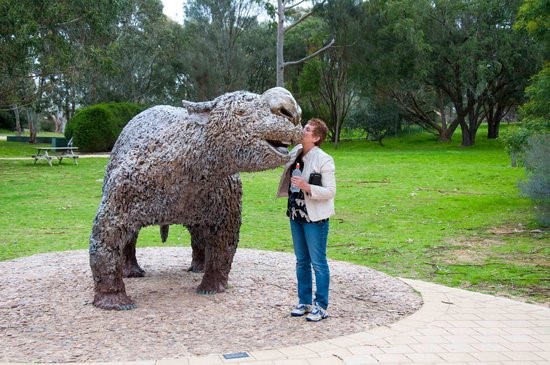Fear (and the accompanying stress and tension) can easily be seen as a wholly negative, futile experience; especially in a developed world where we rarely encounter physical danger. In this blog post I look at the role that fear has played throughout our evolutionary history – looking back to when it was still beneficial and examining how it can fall short of our modern-day needs.
The saying goes that ‘there is nothing to fear but fear itself’. This may well be true for a lot of people living with the daily pressures and challenges of the modern world. Nowadays, we often encounter the thing we have been anxious about – let’s say an exam – only to find our imagination got the better of us and to realise that, even in failure, life goes on. Arguably, in this case, the most apt thing to worry about would be worrying so much that we were unable to prepare for the exam; fear of fear itself. So why do we fear when it so often hinders rather than helps us?
The answer lies in our evolutionary history. The world, for most, has now become a lot safer than it used to be. Humans weren’t always top of the food chain and the most dominant species on Earth. Rather, we were a middling ape-like species of hunter-gatherers, with as many other creatures to be afraid of as were afraid of us. In the past, learning the association between an area of land and a group of predators was the difference between life and death. If you didn’t avoid that lake where sabre-toothed cats often hung out, quenching their thirst, you wouldn’t be around for very long. Our ability to learn to be fearful kept us alive.
“fear has been kind to humans”
Evolutionarily speaking, fear has been kind to humans. Many species were less fortunate and are now long-gone due to a lack of appropriate fear. For example, when humans arrived on Australia’s shores roughly 50,000 years ago, the animals living there were not afraid. Gigantic marsupials, much bigger and stronger than humans, would have spotted groups of unusual, bald, apes moseying around and thought nothing of it. It didn’t take long before nearly all these larger species were hunted into extinction by man – easy pickings due to their lack of fear. By contrast, our fear has kept us alive to this day.

Homo sapiens (or human) eating a Diprotodon (the largest marsupial to ever live) – These 3 tonne animals became extinct shortly after humans reached Australia. Had they developed adequate fear of humans (and tourists), they might have survived.
But now our threat system is out of date. We still require our basic fear response and the ability to associate neutral things (think lake, or nowadays a traffic light) with danger (a sabre-toothed cat or car, respectively) to get by in life. Yet our brains are more frequently being asked to deal with tasks of greater complexity than simply spotting and avoiding a potentially dangerous scenario. More often than ever before, we find ourselves planning our future, thinking about what others are thinking, or being exposed to a myriad of confusing possibilities and outcomes in life. Such complex psychological phenomena have not paired well with the simple fear response. Though the consequences of encountering an ex-partner cannot be compared to those of an approaching lion, we are faced with the same (albeit reduced) fear response; sweaty palms and a pounding heart. Feeling this way is rarely helpful, instead we would benefit much more from clearer thoughts and a relaxed physiological state.
“The problems and dangers we now face require a more prolonged, thought-out approach that engages us rather than helps us to escape or go unnoticed.”
Furthermore, our reaction in fearful situations is often to avoid or do nothing (fleeing or freezing in other terms). This quick, immediate way of responding is unsatisfactory in today’s climate. The problems and dangers we now face require a more prolonged, thought-out approach that engages us rather than helps us to escape or go unnoticed. We have been gifted with the foresight to see the threats facing our species (climate change, unsustainable farming practices, Trump) but sadly we are left with the inadequate, paralysing feeling of anxiety and fear. Let’s hope that evolution is working on an upgrade.


